#Huadian(花钿)
Photo


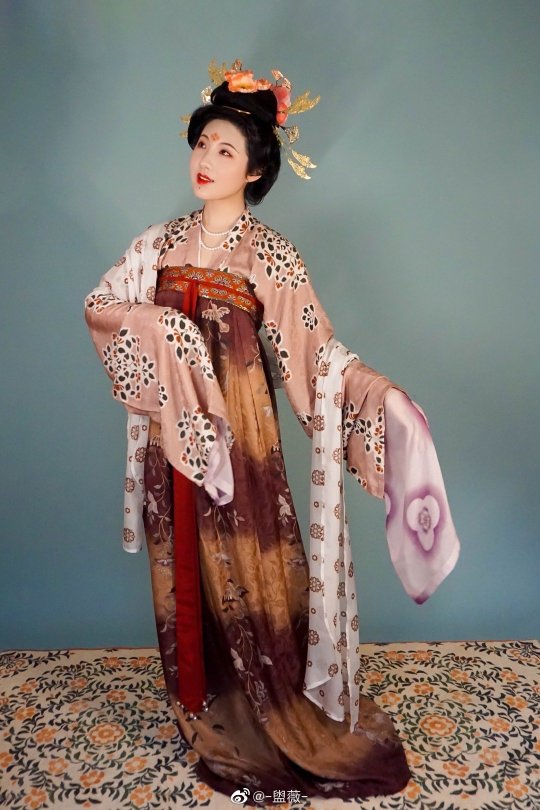






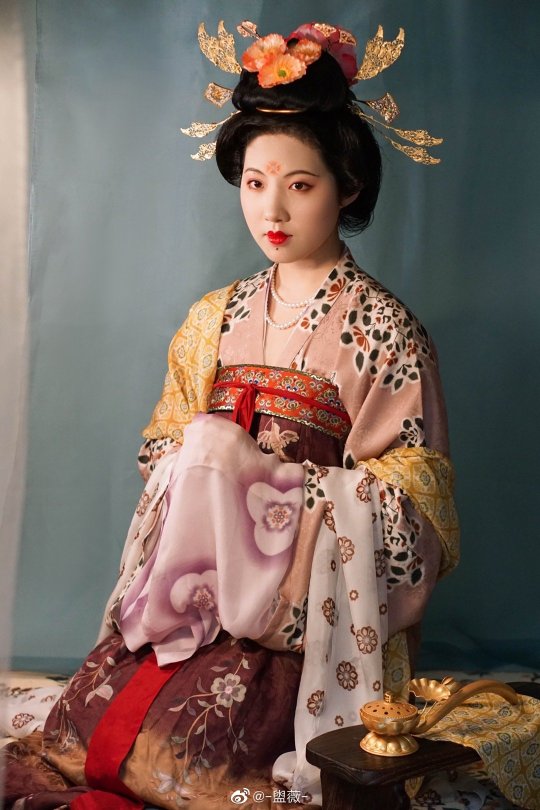
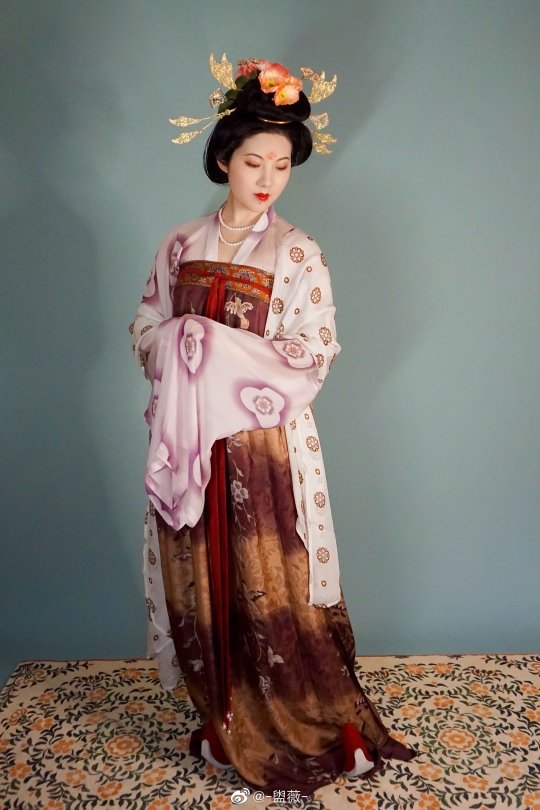

【Historical Artifacts Reference】
Skirt Pattern Reference:Tang Dynasty Murals<Mother and Daughter Doner>in Cave 12 of Dunhuang Mogao Grottoes.
※Due to the mural paint has long been oxidized, resulting in color differences※
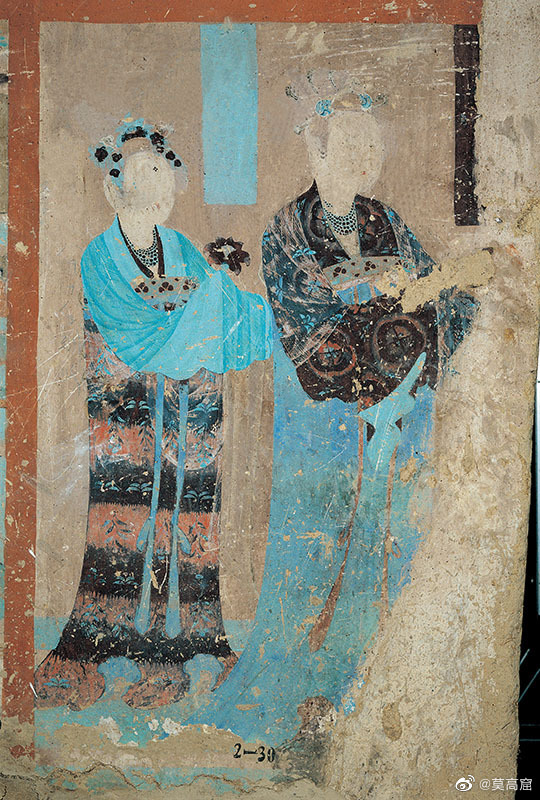
【Skirt Restoriation And Way Of Wearing Reference】
※Let the inner skirt show through the side※
China Five Dynasties and Ten Kingdoms Period:Murals From Tomb of Wang Chuzhi王處直(862–922)
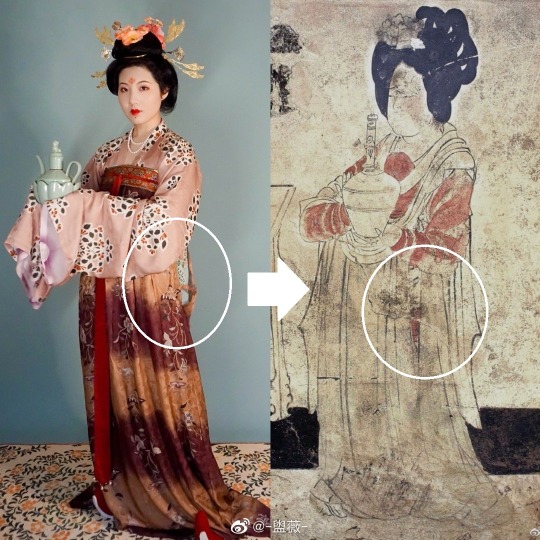
China Tang Dynasty Murals in Cave 159 of Dunhuang Mogao Grottoes.


【Tang Dynasty Hairpin Artifacts】


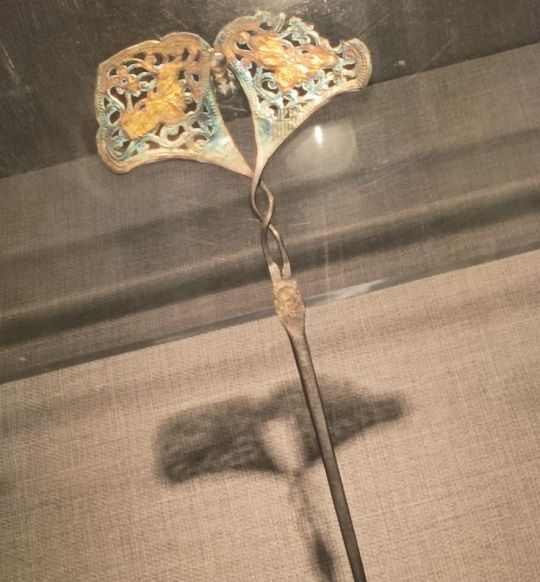


[Hanfu · 漢服]Chinese Tang Dynasty(618-907A.D)Traditional Clothing Refer to Tang Dynasty Dunhuang Mogao Grottoes Murals
Mid-Late Tang Dynasty Women's Attire
————————
📸Recreation Work:@-盥薇-
👗 Hanfu: @时合岁初传统服饰
🔗Weibo:https://weibo.com/3942003133/MC5n4viSt
————————
#Chinese Hanfu#Tang Dynasty(618-907A.D)#hanfu#chinese traditional clothing#chinese history#Mid-Late Tang Dynasty Period#hanfu history#chinese fashion history#ruqun#齊胸衫裙 qixiong shanqun#pibo 披帛#Chinese Culture#china#chinese#Huadian(花钿)#hanfu accessories#hanfu artifacts#Dunhuang Mogao Grottoes Cave#漢服#汉服#recreation#-盥薇-#时合岁初传统服饰#Tang Dynasty Hairpin Unearthed from the tomb of Wu King Wife Tomb#tang dynasty hairpin
230 notes
·
View notes
Note
hi! i hope you dont mind me asking, but in some of the hanfu douyins sometimes women have red markings on their faces, do you know what theyre called? theyre very pretty! but why don't any men wear it tho?
The red markings are a type of makeup called 花钿/huadian. It was worn historically by Chinese women (as a makeup trend basically).
This was not a trend for men historically so you typically do not see it worn by men unless it’s in art or TV (especially the wuxia/xianxia fantasy genre). In those cases, usually the huadian signifies that they are an immortal being (deity or demon).
The only other time boys would have a huadian would be when they’re babies/children. It’s fairly popular to draw a red dot on the forehead of both little boys and girls, usually for auspicious occasions… First day of school, a pre-school/kindergarten teacher might give each student a red dot, for example, or you might get a red dot to take New Years photos… or for school recitals. It depends on where you’re from, I guess, because it might be more of a folk tradition.
#text#answered ask#huadian#花钿#idk how prevalent the child huadian treatment is but my mom used to draw it on with lipstick for me and my sister#and one summer when i got dumped at a daycare near my grandma’s place the teacher gave us each a red dot
205 notes
·
View notes
Text
I did my best.😅
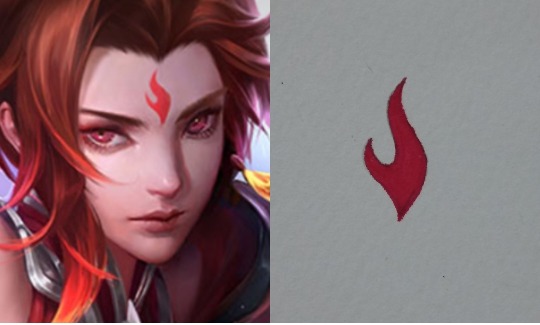


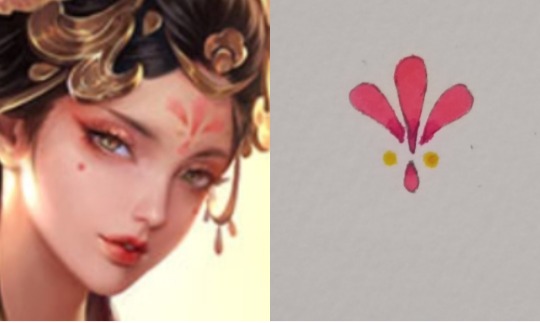
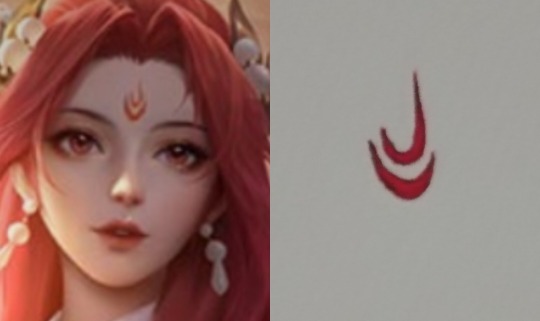

#王者荣耀#honor of kings#花钿#huadian#露娜#露娜绯红之刃#luna#王昭君#王昭君精灵公主#wang zhaojun#杨玉环#杨玉环霓裳曲#yang yuhuan#貂蝉#貂蝉唤灵魅影#diaochan#不知火舞#shiranui mai#mai shiranui#不知火舞魅语
26 notes
·
View notes
Text
Exposing SVSSS Fanon: 14/∞
ALL DEMONS NATURALLY HAVE MARKS ON THEIR FOREHEADS
Rating: FANON - CONFLICTING
In SVSSS, heavenly demons like Luo Binghe, Tianlang-jun, and Zhuzhi-lang have a vermillion mark on their forehead. In fanworks, other demons such as Sha Hualing and Mobei-jun are also depicted as having such a mark.
This conflicts with canon, as the mark is exclusively a symbol of the Heavenly Demon Bloodline, rather than all demons:
“You are no simple demon,” Shen Qingqiu said. “That mark on your forehead is a mark of sin—the mark of the demons who fell from the heavens."
(7 Seas, Ch. 4)
I have often seen this mark referred to erroneously as "huadian (花钿, literally "flower ornamentation")." Though there are similarities in color and location between the two, huadian is a type of traditional-style makeup worn with hanfu, while the mark on a heavenly demon's forehead is 罪印 (Zuì yìn,literally "criminal seal" or "seal of guilt”), translated to english as "mark of sin."
It is a very specific, distinctive feature that heavenly demons have-- one that is most likely well-known to both demons and cultivators alike.
The mark of sin can be repressed, however it will reappear when angry:
For a split second, Luo Binghe’s expression was puzzled, causing his face to appear to soften, just a little. But soon this sliver of softness dissipated without a trace. His pupils contracted, and a red mark flickered at the center of his forehead in a burst of light.
(7 Seas, Ch. 10)
Or when weakened:
When he looked, though Luo Binghe’s eyes were closed, the heavenly demon mark of sin had appeared on his forehead, lines of crimson pulsing along with his breaths. The red glow flickered on and off along with it.
(7 Seas, Ch. 16)
Which suggests that it takes some amount of conscious effort to suppress and conceal.
Heavenly Demons (天魔,天之魔) are somewhat set apart from the demon race (魔族)as a whole, despite both being called demons. Heavenly Demons specifically did not originate within the demon world, but instead fell from the heavens:
Legend had it that these denizens of the heavens had fallen to depravity and become demons, so they were called “heavenly demons” for short.
(7 Seas, Ch. 2)
Falling to depravity here is the same as succumbing to heart demons (心魔), which aren't altogether easy to explain, but can be thought of as mental and spiritual instabilities resulting from negative emotions and obsessions. This is the same "Xin Mo" as the name of the sword.
In the Xianxia genre, anyone can "become a demon" in this way-- a similar (almost identical, since based on similar philosophies) trope in western fiction would be in Star Wars, where one "falls to the Dark Side."
Therefore, the mark of sin or zuiyin if you wish to use pinyin, is linked to the heart demons and corruption of the heavenly demons and their descendants.
This is evident from the first moment when the seal on Luo Binghe's bloodline is removed:
Once that stream of light touched Luo Binghe’s brow, it seeped into his skin, turning into a fiery red mark. Luo Binghe was lost to his bloodlust. He didn’t know why, only that his head ached like it was about to explode, and he nearly collapsed to his knees. His entire body roiled with a desire to inflict savage cruelty.
(7 Seas, Ch. 4)
This sudden bloodlust is a result of the unsealing of his demonic bloodline-- with the mark of sin appearing along with it.
The mark of sin does not have one fixed appearance, either:
When he tested Luo Binghe’s forehead with the back of his hand, it was still scalding hot, and the mark in the center of his forehead was growing even redder and brighter.
(7 Seas, Ch. 16)
This occurs after Luo Binghe has been injured and poisoned, and is unconscious. The change in the mark's appearance is likely due to his weakened state.
The most significant example of this, however, is at Maigu ridge, when Luo Binghe has been entirely overtaken by Xin Mo's (the sword and the internal) corruption:
The dark-red mark of sin crept over his forehead, expanding outward until marks covered the entirety of his snow-pale face, then continued spreading down his neck. Xin Mo had fallen beside them, and it seemed to respond to the marks on Luo Binghe’s body: it glowed and dimmed, its purple light and black miasma circulating endlessly.
(7 Seas, Ch. 21)
By the end of this, the marks extend all the way down his arms:
Luo Binghe’s arm around him slowly tightened. As his tears continued to flow, he suddenly noticed that the marks on his arm were rapidly receding.
(7 Seas, Ch. 21)
From this we can conclude that heavenly beings succumbed to their heart demons and fell from the heavens to become the heavenly demons. Their demonic power originated not from their species alone but from their heart demons, which their descendants inherited as their own source of demonic power which is why LBH suddenly was overcome with bloodlust when his bloodline was unsealed. The mark of sin appears as a curse to mark those who succumbed to heart demons and fell from the heavens, but it can be suppressed through self control (i.e. controlling those heart demons)while it will reappear when that self-control is compromised in some way. When Xin Mo preyed on LBH's fears and insecurities, it caused him to fall entirely under the control of his heart demons-- which lead to the mark of sin spreading over his entire body.
Now that the origins and nature of the mark of sin have been explained, it's easy to say that other demons will not have such a mark, since they are not from that same cursed bloodline.
Of course, does that mean that everyone who draws Sha Hualing and Mobei-jun with marks on their forehead is drawing them incorrectly?
No, not necessarily.
The only thing this tells us is that ordinary demons do not naturally have this mark, and it will not have the same features (such as glowing, spreading, responding to emotional state, etc.).
It is entirely possible and believable that demons, especially demon nobility, would paint or apply a mark to their foreheads as part of their fashion and a status symbol.
For an explanation of this, let's go back to the huadian. While the exact origins of huadian ornament and makeup are unknown, there is a folkloric origin story to it. In this origin story, a plum blossom was blown onto the forehead of a princess while she was out on a walk (or alternately, fell onto her face while she was taking a nap). Afterwards, she was unable to wash it off, but because it looked strikingly beautiful on the princess, it became a new popular fashion trend for women to apply flower ornamentation or makeup to their foreheads.
Something similar could have happened with demon culture.
Of course, the ancient heavenly demons from whose lineage Luo Binghe hailed were the most elegant and traditional of the demonic bloodlines—equivalent to the Demon Realm’s blue blood nobility.
(7 Seas, Ch. 6)
The heavenly demon bloodline is the most noble and high-ranked in the demon realm, with heavenly demons considered princes and princesses:
As the future princes of demonkind, their bloodline was first-class.
(7 Seas, Ch. 2)
Tianlang-Jun’s younger sister counted as something like the demon race’s princess.
(7 Seas, Ch. 12)
Therefore, it wouldn't be strange for other lineages of demon nobility to attempt to imitate their appearances-- this may have something to do with noble demons appearing more humanoid as well. It could also mean that a similar thing to the huadian origin story may have happened and demon nobility took up the fashion of wearing forehead ornamentation or makeup to denote their status, perhaps even having various specific marks to denote clans or individuals.
Of course while this is a possibility, it is not something that comes from canon itself and would still be a headcanon or fanon, so it should not be used in an argument for a canonical depiction of Sha Hualing and Mobei-jun with marks on their foreheads.
While a depiction of demons wearing marks on their foreheads is not necessarily without basis or explanation, the idea that they have these marks as a natural physical feature is canonically inaccurate.
One footnote: while heavenly demons do not originate within the demon realm, their bloodline would still be counted as part of the demon race-- this is evident in the fact that Zhuzhi-lang, also a mixed-bloodline heavenly demon (but half snake-race rather than half-human), has a bloodline more pure than Luo Binghe's and is able to suppress LBH's blood in SQQ's body (perhaps the fact that the demon race as a whole utilizing demonic qi instead of spiritual qi for cultivation is what creates the divide). Zhuzhi-lang is still considered mixed-heritage, though, so it is unknown where the boundaries within the demon race itself lie. It is also possible that there is an entire untold story about the origins of the demon race which would change up various arguments here, but we don't have that origin story, and therefore there is no context aside from what's in the novel-- we can only assume that demons originated within the demon realm, while heavenly demons entered it later after falling from the heavens-- but they are still considered part of the demon race despite a different origin.
#fanon exposed#conflicting#svsss#heavenly demon#luo binghe#sha hualing#mobei jun#tianlang jun#zhuzhi lang
325 notes
·
View notes
Text

The red pattern on a woman's forehead in ancient times is called "Huadian (花钿)", a special accessory for women's facial makeup.
4 notes
·
View notes
Photo



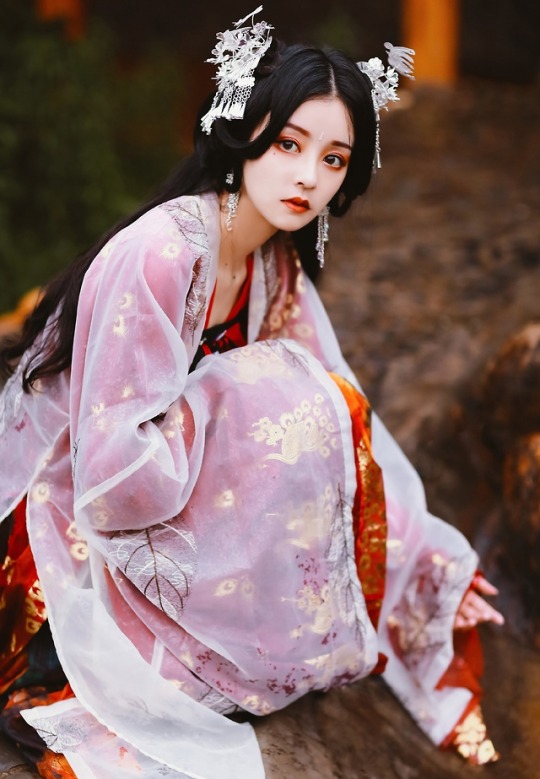


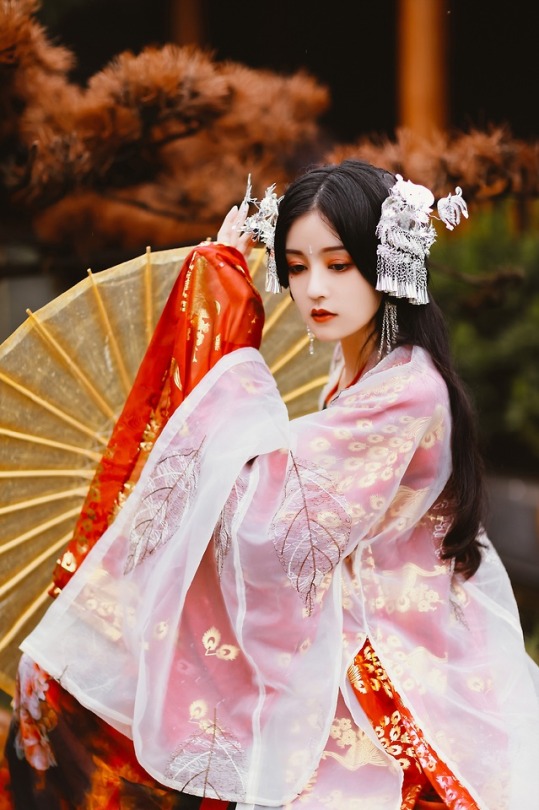



「胭脂纱」
A lush autumnal photoshoot featuring traditional Chinese Hanfu, via 界之猫. The model is wearing a Tang dynasty-style chest-high Ruqun/襦裙 and double-layer Daxiushan/大袖衫 (large-sleeve robe). Splashes of red, orange, and green combine with gold peacock feathers and translucent leaves to create an ensemble that perfectly complements the fall foliage. Exquisite hair ornaments, earrings, and a silver Huadian/花钿 complete the look.
3K notes
·
View notes
Photo

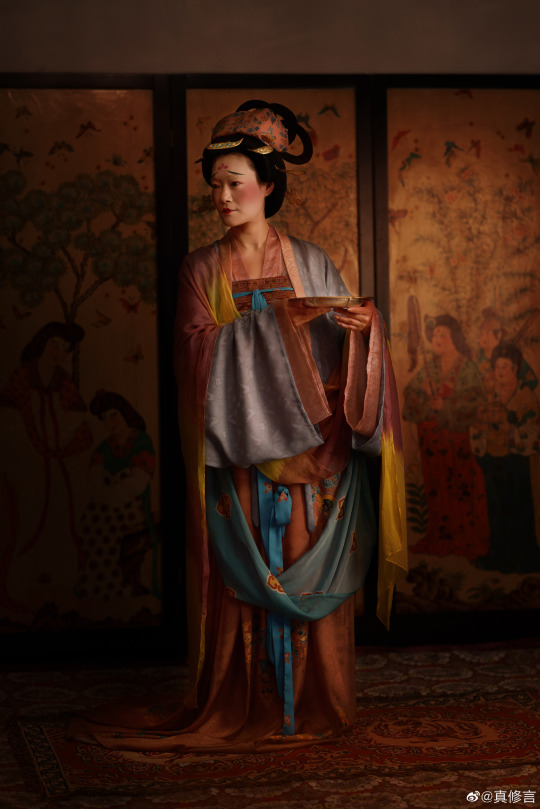



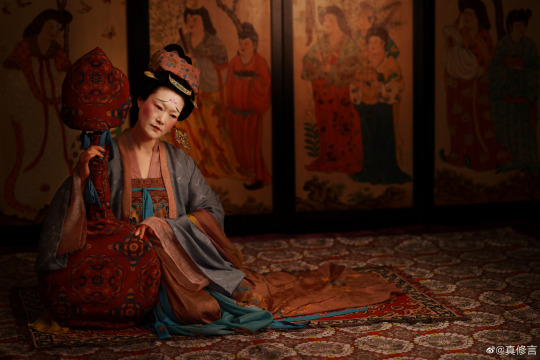

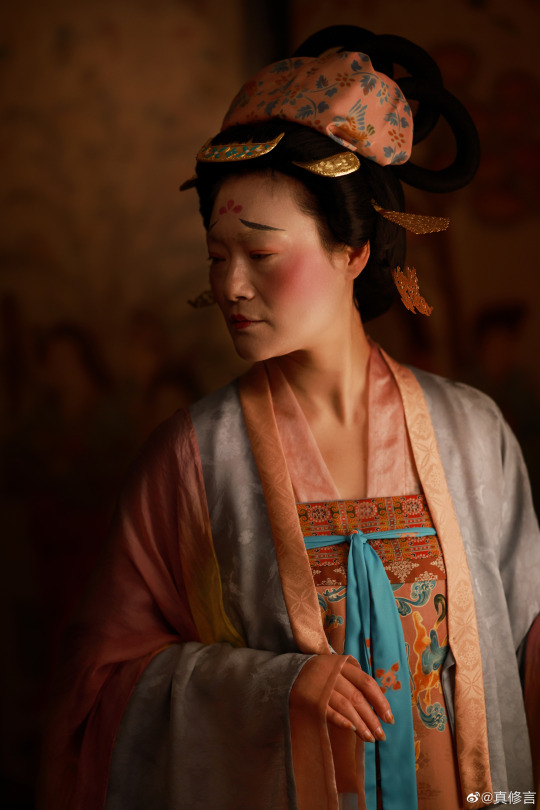
【Hairstyle & Makeup Reference Artifacts】
♦️China Tang Dynasty Mural from:【Anyang Tang Dynasty Zhao Yigong’s Tomb/安阳唐赵逸公墓壁画】
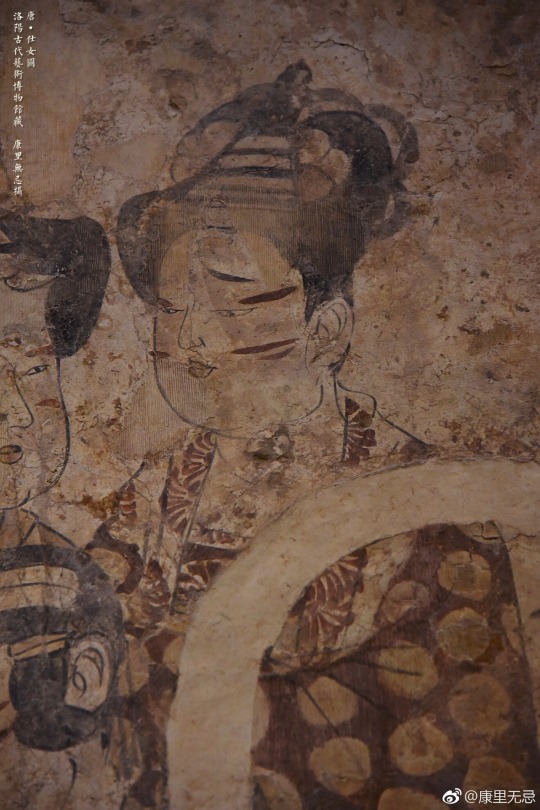
[Hanfu · 漢服]Chinese Tang Dynasty(618-907A.D)Traditional Clothing Refer to Tang Dynasty murals
Woman’in Emperor Wenzong of Tang period
————————
📸Recreation Work:@真修言
🔗Weibo:https://weibo.com/1652210557/My9l7sNUj
————————
#Chinese Hanfu#Tang Dynasty(618-907A.D)#hanfu#chinese traditional clothing#Emperor Wenzong of Tang period#hanfu history#chinese history#chinese fashion history#ruqun#齊胸衫裙 qixiong shanqun#pibo 披帛#Chinese Culture#china#chinese#Huadian(花钿)#Blood Halo Makeup / 血晕妆#漢服#汉服#historical fashion
168 notes
·
View notes
Photo
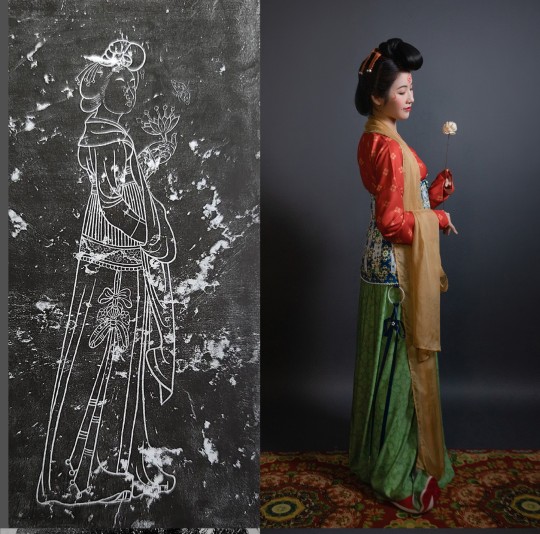

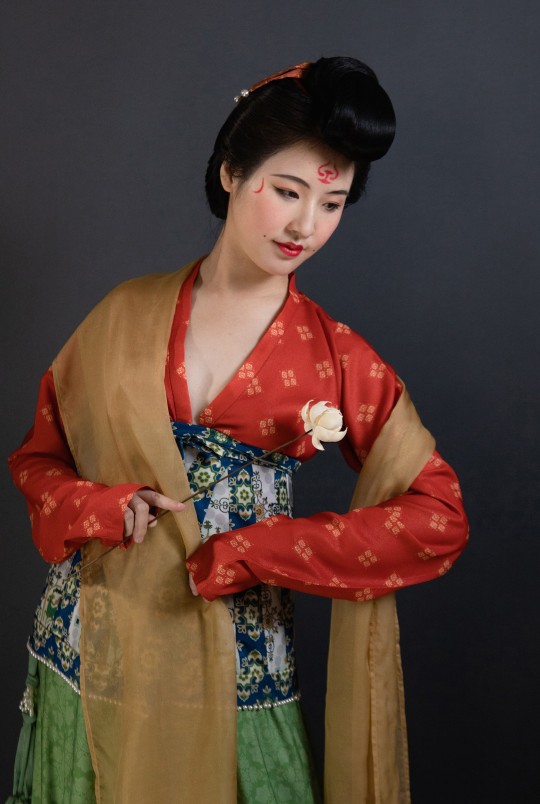
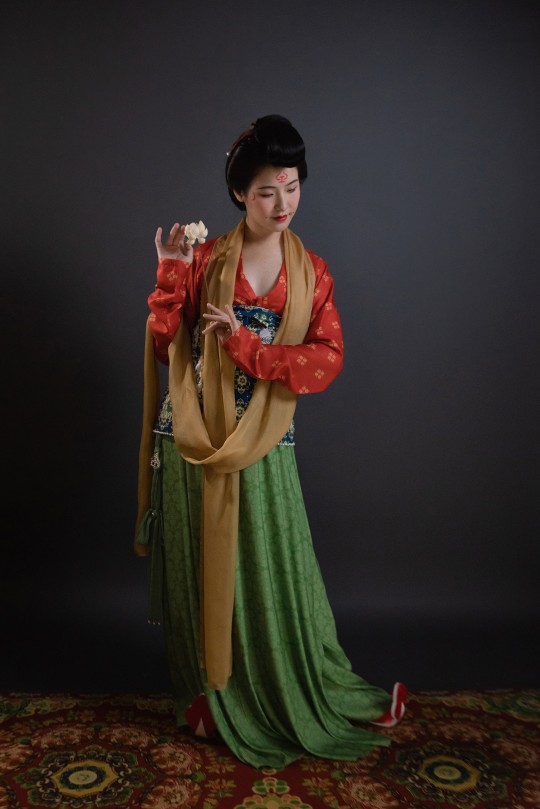
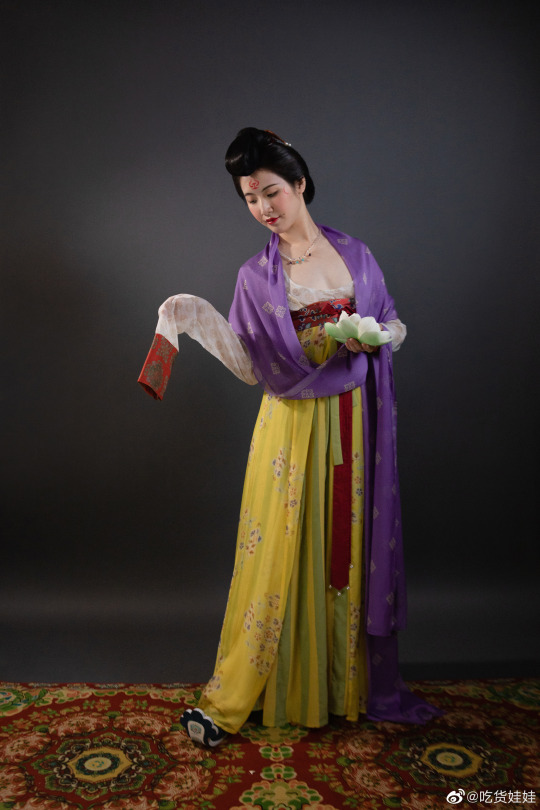
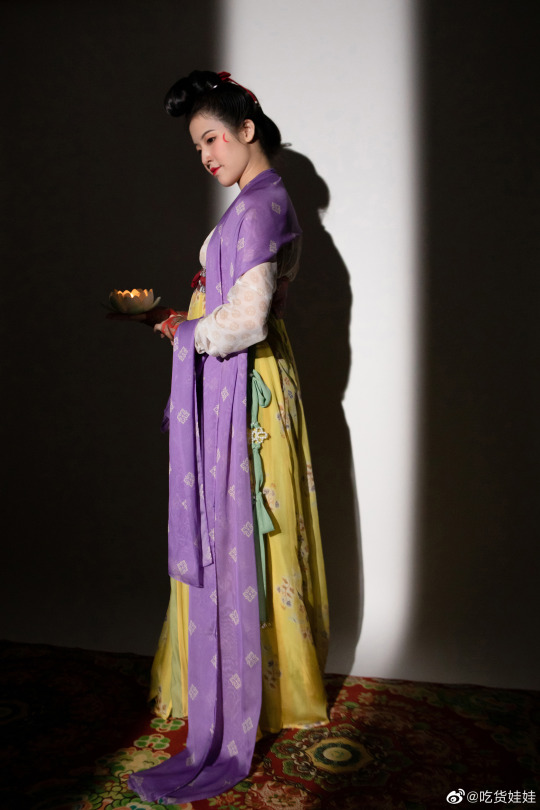
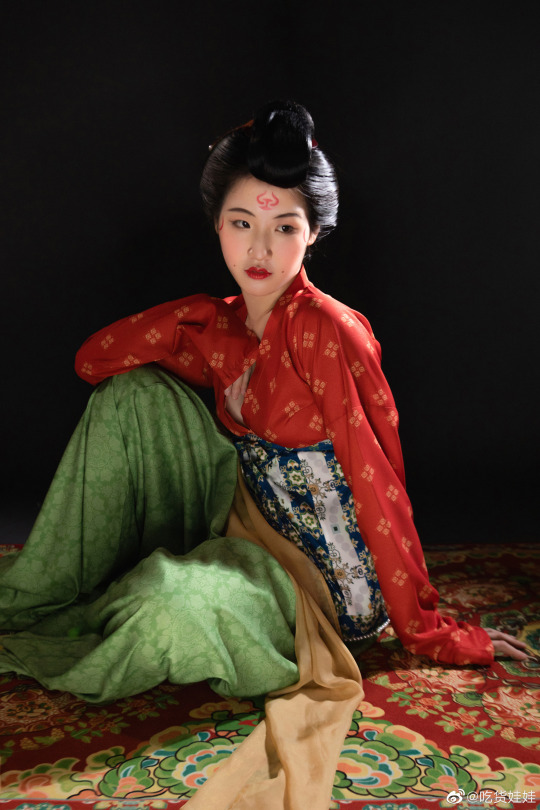
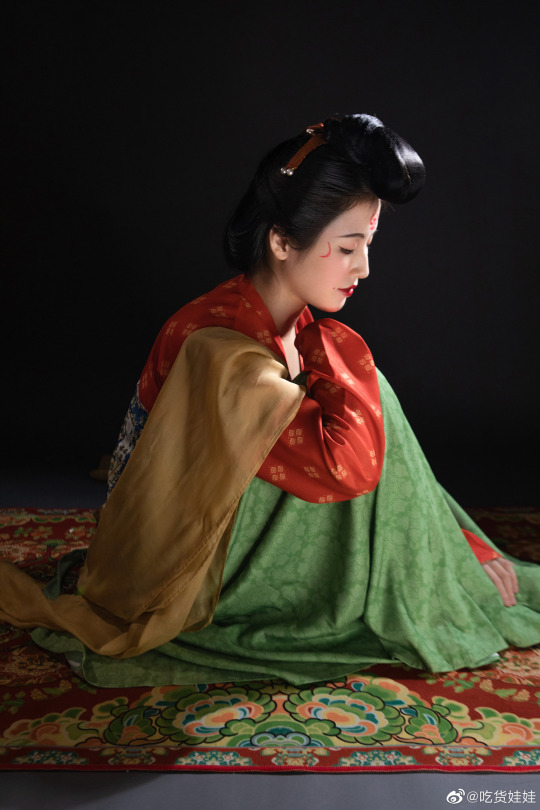


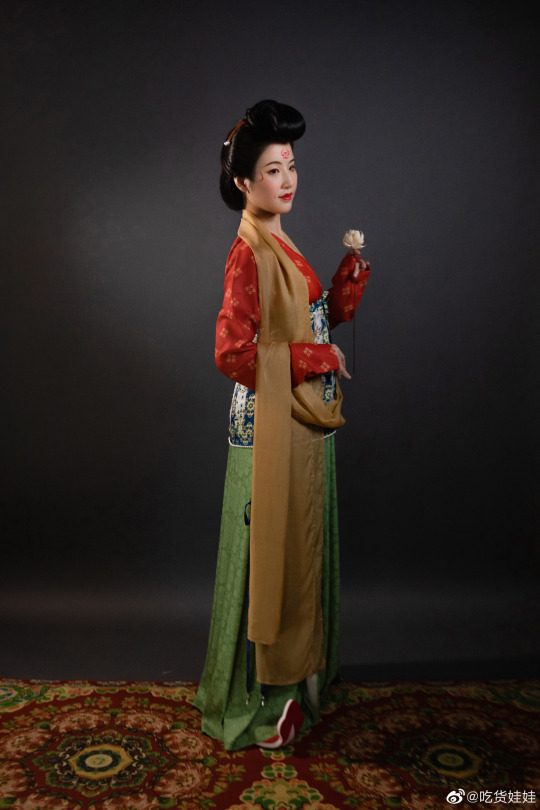
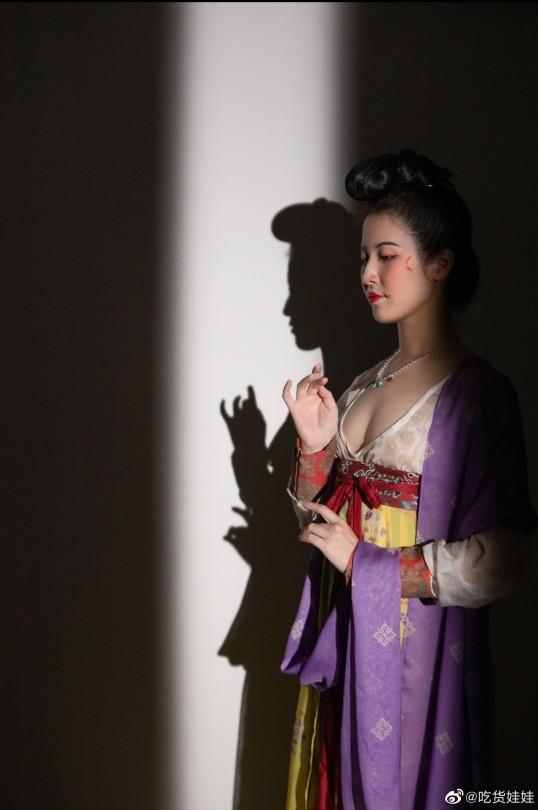
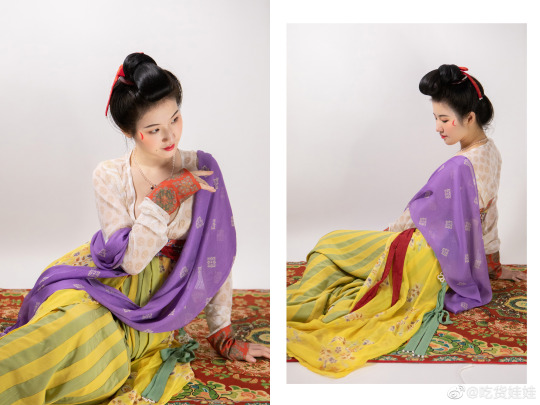
【Historical Reference Artifacts】:
Stone Carving from The Tomb of Xue Jing薛儆 (Emperor Ruizong's son-in-law) & Tang Dynasty Female Figurines:
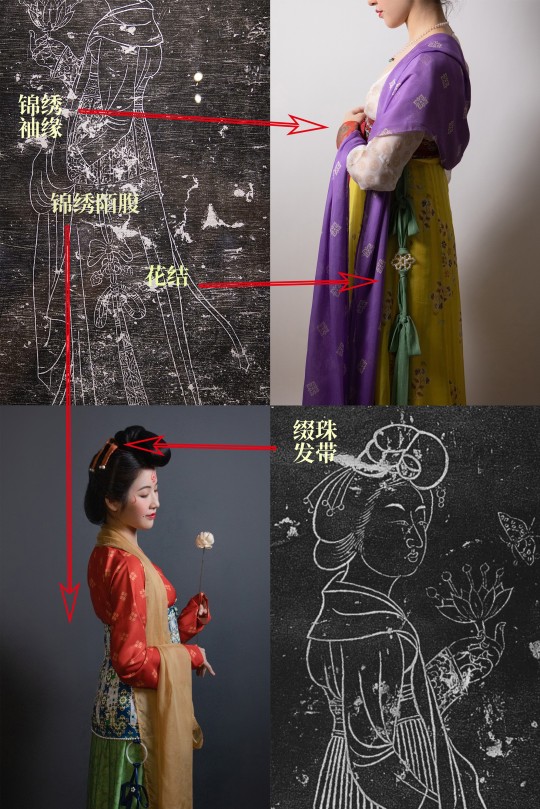



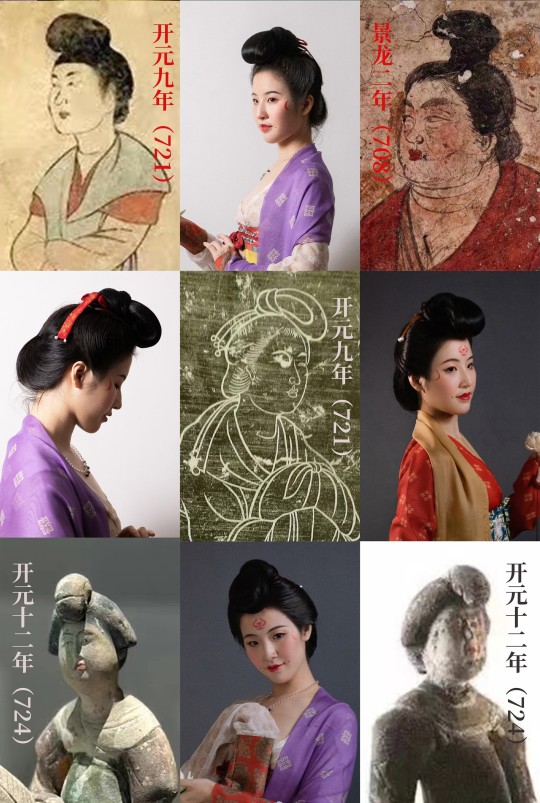

[Hanfu · 漢服]China Tang Dynasty (960–1127 AD) Chinese Traditional Clothing Hanfu & Hairstyle Based on Tang Dynasty Relics【沉寂千年的光阴】
Around the beginning of Kaiyuan period (708-724 AD) woman fashion & hairstyle
_______
Recreation Work :@吃货娃娃
🔗Weibo:https://weibo.com/1868003212/Mj46arcP9
_______
#Chinese Hanfu#Tang Dynasty (960–1127 AD)#beginning of Kaiyuan period (708-724 AD)#The Tomb of Xue Jing薛儆 (Emperor Ruizong's son-in-law)#锦绣袖缘#锦绣陌腹mofu#Huadian/花钿#裙背带#裙片掩合处#合围#背带#花结/flower knot#chinese traditional clothing#chinese historical fashion#Chinese Costume#chinese history#chinese archaeology#chinese culture relics#chinese art#Chinese Aesthetics#china#吃货娃娃#沉寂千年的光阴#hanfu#hanfu historical relic#hanfu history#漢服#汉服
223 notes
·
View notes
Photo

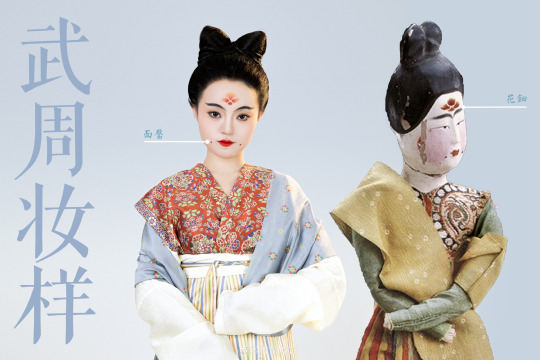





【Historical Artifact & Textile Pattern Reference】:

[Hanfu · 漢服]China Tang Dynasty (618– 906 AD) Chinese Traditional Clothing Hanfu Reference to Relics
Wu Zetian period(690~705 AD)Woman Attire,Hairstyle & Makeup
————————
📸Photo: @西安云水影像 ,@赵橙Cc,@星雨Starry
👗Styling: @雪樱樱呀
Plan|Makeup|Model :@我是411
Weibo:https://weibo.com/2040114485/Mnw8GdgjL
————————
#Chinese Hanfu#Tang Dynasty (618– 906 AD)#Wu Zetian period(690~705 AD)#hanfu history#hanfu#chinese traditional clothing#Chinese Culture#Chinese Costume#chinese art#chinese history#Chinese historical fashion#historical hairstyles#Chinese Aesthetics#hanfu accessories#MianYe (面靥)#Huadian(花钿)#唐褙子 TangBeizi#pibo 披帛#汉服#漢服#西安云水影像#赵橙Cc#星雨Starry#雪樱樱呀#我是411
161 notes
·
View notes
Text
《王者荣耀》—海月🌙

2 notes
·
View notes
Text
《王者荣耀》干将莫邪皮肤—画中仙,莫邪花钿

6 notes
·
View notes
Photo






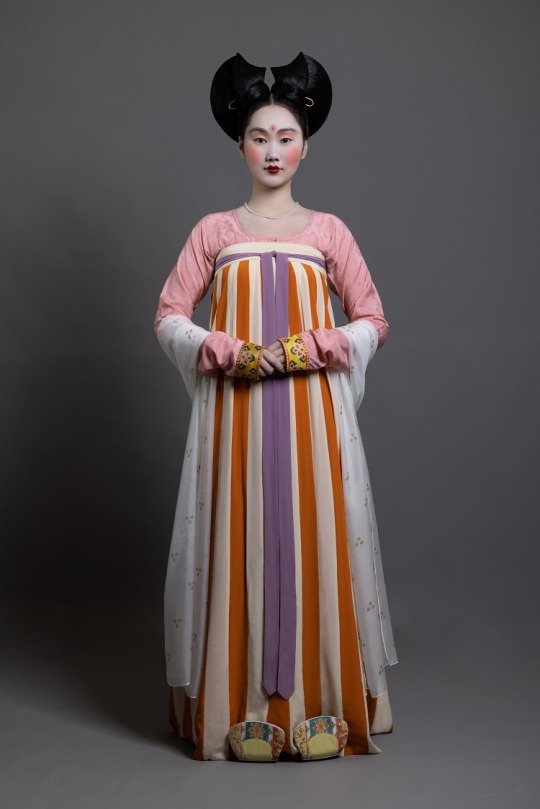


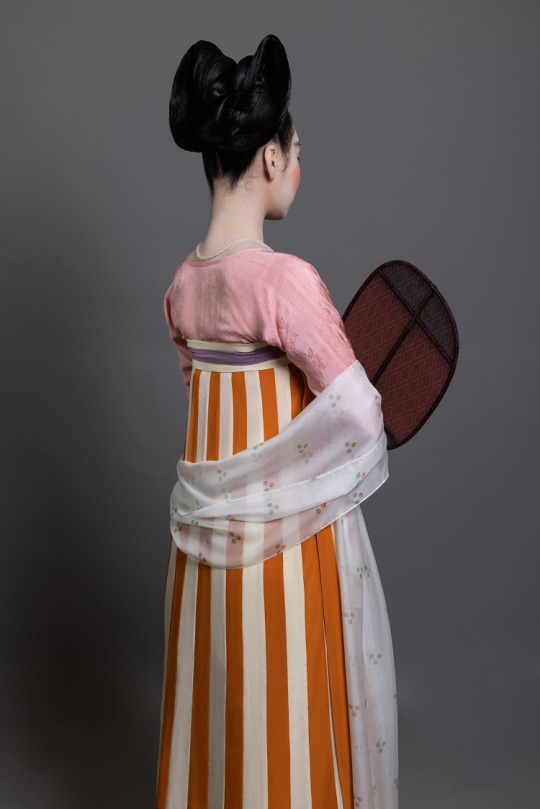
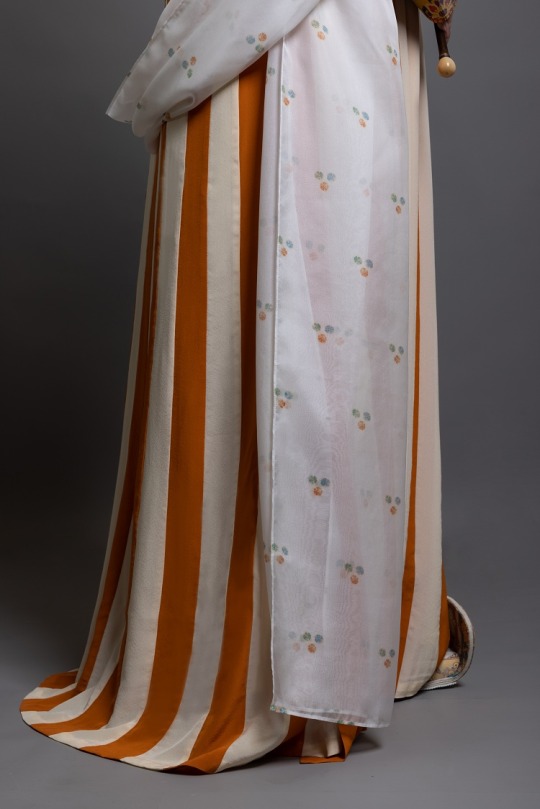
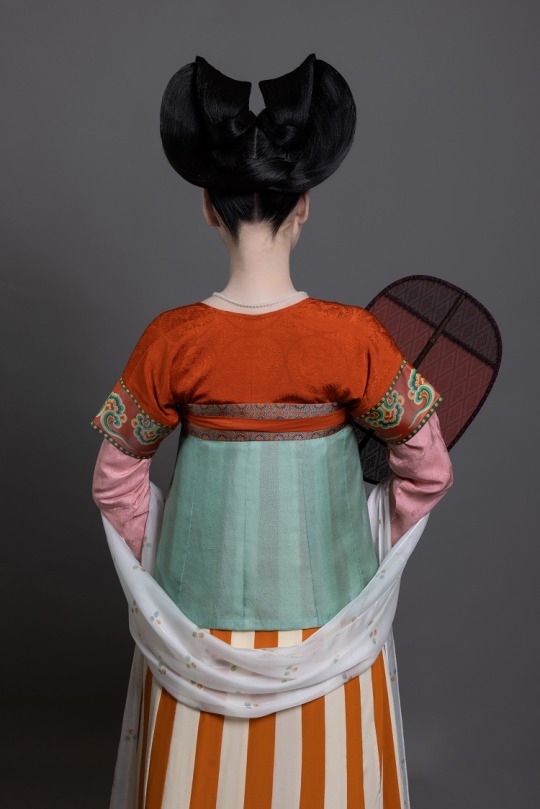
【Historical Artifacts Reference】
Murals in the Tomb of Princess Xin Chang, Liquan County, Shaanxi Province/陕西省礼泉县新城长公主墓壁画 (663 AD)
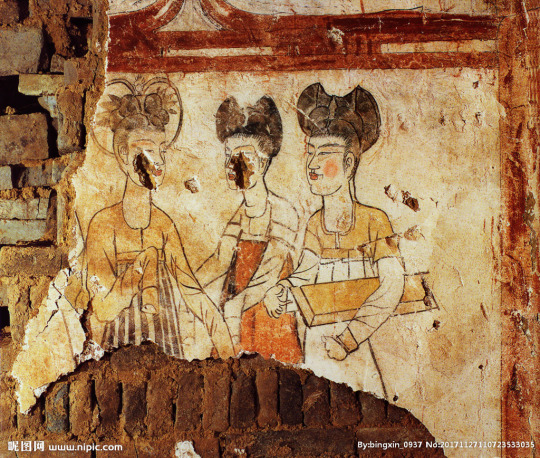


[Hanfu · 漢服]Chinese Tang Dynasty (618–907AD) Traditional Clothing Hanfu & Hairstyle Based On Relics Murals in the Tomb of Tang Princess Xin Chang
Women’s Clothing, Hairstyle in the Early Tang Dynasty Period (663 AD)
—————-
【History Note】
After the establishment of the Tang Dynasty, with the completion of the great unification and the recovery of the social economy, the stable status of a big country brought a confident and enlightened cultural atmosphere, which was fully reflected in clothing and social customs.
At that time, all the noble ladies in the palace liked towering hairstyles, and advocating slender clothing was the fashion, showing a tall and elegant temperament as a whole. In such popular aesthetics, the combination of high buns and inter-color skirt became all the rage and became a representative attire in the early Tang Dynasty.
In addition, the makeup gradually deviates from the relatively plain style in the past, and develops into more gorgeousness. The red makeup that put on the cheeks becomes thicker and the range gradually expands. The shape of eyebrows has changed from slender eyebrows to bold thick eyebrows, and face decorations such as Huadian(花钿) and XieHong斜红() are also more prominent.
※ Huadian(花钿) :traditional Chinese ornamental forehead makeup
※ XieHong (斜红) : a special kind of face decoration in ancient times. When dressing up, a red crescent is drawn on both sides of a woman’s eyes.
In this set of attire, the model hair in a double bun, wears a narrow-sleeved blouse with brocade margins on the inside, half-sleeves with brocade margins on the outside, and a inter-color skirt,a light gauze wrap around her body. It was a popular dress in the Tang Palace during this period.
On the occasion of the Spring Festival, 裝束复原 Team wishes more people get to know about the traditional Chinese costume culture. At the same time, wish every friends around the world have a happy New Year!
————————
Recreation Work: @裝束复原 & @桑纈
🔗Weibo:https://weibo.com/1656910125/Mpl9wlxE5
————————
#Chinese Hanfu#Tang Dynasty (618–907AD)#Hanfu#Early Tang Dynasty Period (663 AD)#Tomb of Tang Princess Xin Chang#hanfu history#chinese history#china history#Chinese historical fashion#historical makeup#historical fashion#chinese traditional clothing#chinese#chinese new year#spring festival#Chinese Culture#recreation#chinese art#Chinese Aesthetics#chinese fashion history#裝束复原#桑纈#Huadian(花钿)#XieHong (斜红)#shanqun#pibo#间色裙 (inter-color skirts)#漢服#汉服
290 notes
·
View notes
Video

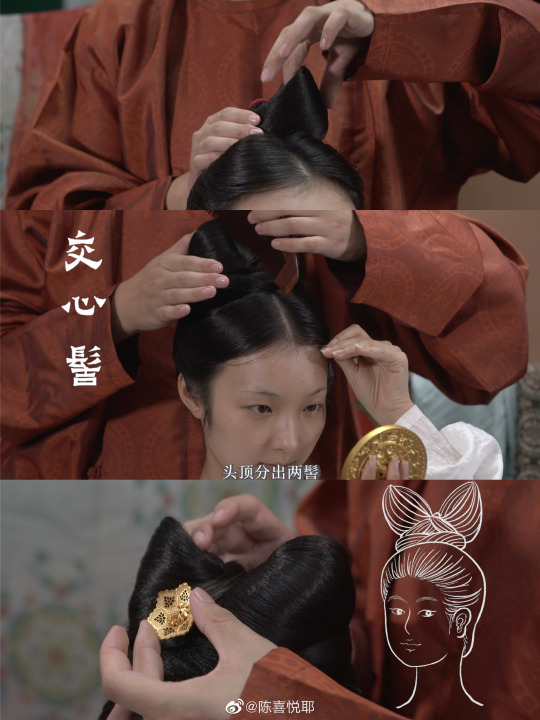
【STEP 1】 use your comb to brush your hair into a "交心髻/cross-heart bun"

【STEP 2】 Drawing your eyebrow into a "连心眉/连眉 or 阔眉”, Zhou dynasty 武周时期 (690–705),which is Wu Zetian period, This kind of eyebrows was very popular in Wu Zetian period.The front part of the eyebrows are almost connected, so it is called "连心眉”
--
【STEP 3】Apply rouge (胭脂) on the cheeks of the face coat with lead powder
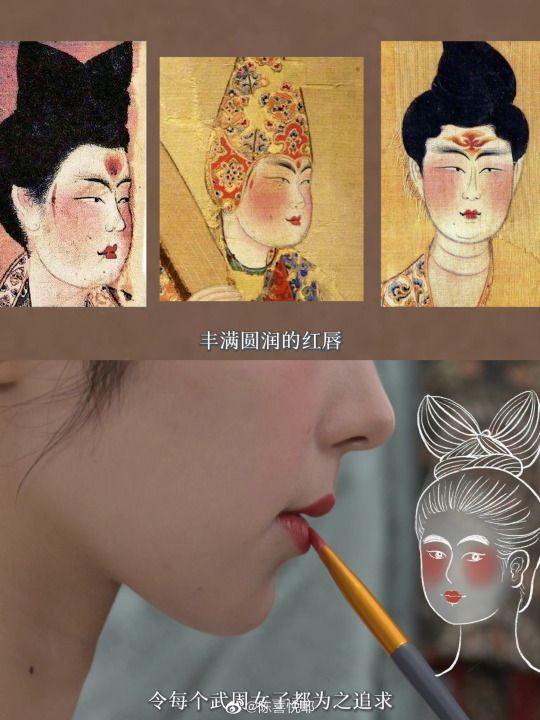
【STEP 4】Apply Red lip Grease, plump and round red lips are the pursuit of every woman in Wu Zetian period.

【STEP 5】: Draw XieHong (斜红/ Xié hóng ) & Draw Huazi / Huadian (花子/ 花钿)
Xie Hong is a special kind of face decoration in ancient times. When dressing up, a red crescent is drawn on both sides of a woman’s eyes.
Huazi / Huadian Is a form of traditional Chinese ornamental forehead makeup, which is located between the eyebrows and sometimes on the cheeks

【STEP 5】: Wear “直领大襟短衫” & “背子 / 唐背子”
背子 / 背子: Refers to short-sleeved or sleeveless tops, It can be worn with the top hem putting in the outside or putting in the inside the skirt.


【STEP 6】: Wear “间裙/间色裙 ( inter-color skirts ) ”
In the Wei and Jin Dynasties, there were already have inter-color skirts, which were popular until the Sui and Tang Dynasties.
Cut two-color or multi-color fabrics into strips that are narrow at the top and wide at the bottom stitched together.
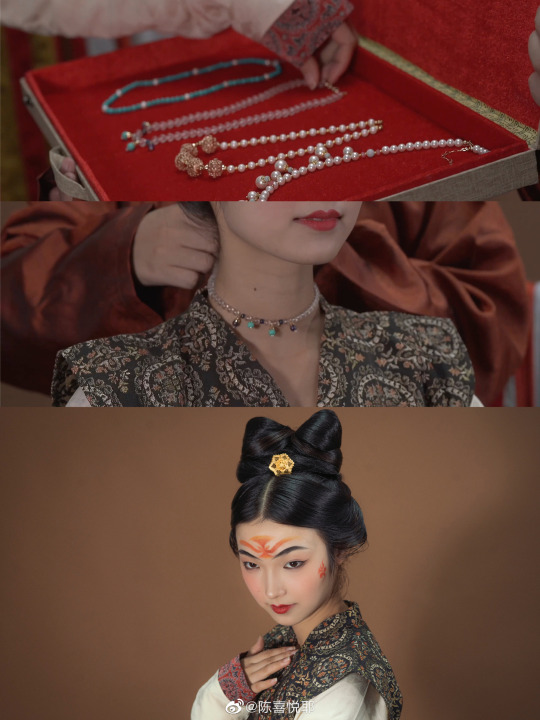
【STEP 7】:Put on a necklace, Finish


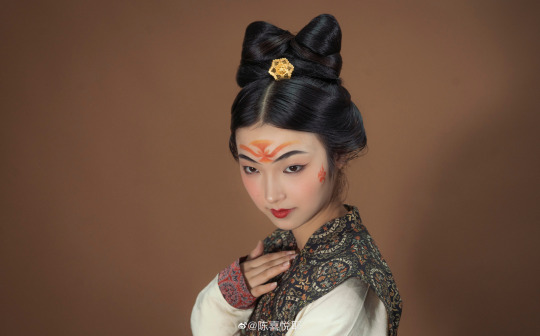
[Hanfu · 漢服]The Morning of Noble Women in Zhou Dynasty (Wu Zetian period)——How women of the Tang Dynasty Overcame Double Ninth Festival
------------
In the Tang Dynasty, chrysanthemums had not yet cultivated complex varieties. White, yellow, pink-purple daisies may be common chrysanthemums in the Tang Dynasty.
Worship ancestors and gods, watching chrysanthemums, and wear the zhuyu (茱萸) plant Cornus officinalis. (Both chrysanthemum and zhuyu are considered to have cleansing qualities and are used on other occasions to air out houses and cure illnesses.),eat Double Ninth Cake, hold a banquet, climb mountains and pray for luck, these are the customs of the Double Ninth Festival in ancient times.
_______
Plan:@ 陈喜悦耶、@象罔境
📸Photo: @象罔境
🧚🏻Model/Copywriting/Voiceover/Editing :@陈喜悦耶
💄Makeup: @象罔境 、@赵长月er
Carpet : @贞观唐荟要
🔗Weibo:https://weibo.com/6425876323/M8CwizPTt
_______
#chinese hanfu#Double Ninth Festival#Chong Yang Festival#Wu Zetian period#Zhou Dynasty#Tang Dynasty#hanfu accessories#China History#traditional Chinese holiday#chinese historical fashion#chinese traditional clothing#chinese culture#chinese art#chinese makeup#chinese history#chinese style#historical fashion#重陽節#重阳糕#武周贵族女子的清晨#唐代靓女如何过重阳#陈喜悦耶#象罔境#赵长月er#贞观唐荟要#漢服#汉服
311 notes
·
View notes
Video
[Hanfu · 漢服]China Tang Dynasty Women's Fashion-Shangguan Wan'er(Wu Zetian period)
【Tang Dynasty Makeup Step】
STEP 1: Apply Powder
STEP 2: Put On Rouge Cheek
STEP 3: Draw Eyebrows
STEP 4: Apply Red lip Grease
STEP 5: Put On Huadian(花钿), MianYe (面靥) etc.
--------------------
During the time of Shangguan Waner (上官婉儿) , it was the heyday of feminism in the Tang Dynasty. At this time, women were also started make their body shape from slender to plump. Long skirts and flat collars became the fashion at that time, and high buns hairstyle and golden hairpins were all the rage at that time.
--------------------
【History About Shangguan Wan'er (上官婉儿) 】
Shangguan Wan'er (上官婉儿)was a famous female poet and female official during the Wu Zetian period. When she was young, her grandfather Shangguanyi was convicted and murdered, and then she accompanied his mother Zheng to the inner court as a maid.
She is smart and good at writing, and has won the trust of Wu Zetian. She has been in charge of the palace system for many years.
Most of the ministers' memorials are decided by her, and she is known as the "women prime minister". During Tang Zhongzong's time, she was named Zhaorong (昭容:title of concubine) and had a prominent position in the political and literary.
After Zhongzong's restoration, Shangguan Wan'er once presided over Fengya“风雅”(Refers to cultural activities related to poetry), and commented on the world's poetry and prose on behalf of the imperial court. At one time, many Ci ministers(Refers to a learned and knowledgeable minister who acts as an advisor to the emperor and participates in politics) gathered in front of her house, and "Full Tang Poems《全唐诗》" included thirty-two of her posthumous poems.
In 710 AD, King Linzi : Li Longji launched a coup d'état, and Shangguan Wan'er, Empress Wei and Princess Anle were killed at the same time.
In 710-712 AD, she was re-canonization as Zhaorong, posthumously named Huiwen(惠文), and was buried in Hongduyuan, Maodao Township, Xianyang County, Yongzhou.
--------------------
Recreation Work :@Niki-镜子
Model: @-是非娘娘-
Hanfu: @春谷山房 (Provided by @云云的黑眼圈儿 )
Hair Accessories: 郑雅 @静尘轩主-剪灯笑语
Photo: 刘芳
Shooting venue: @这是一枚小方方
Weibo:https://weibo.com/1730238267/LwMFC6mXa
--------------------
#chinese hanfu#tang dynasty#early tang dynasty#hanfu#hanfu_challenge#hanfu fashion#hanfu history#hanfu accessories#chinese#chinese history#china history#chinese traditional clothing#chinese art#chinese culture#chinese clothing#chinese fashion#chineseart#chinesestyle#china#historical costuming#historical clothing#historical fashion#historical hairstyles#historical makeup#Hanfu From China#漢服#汉服#中華風#shangguan wan'er#上官婉儿
151 notes
·
View notes
Photo

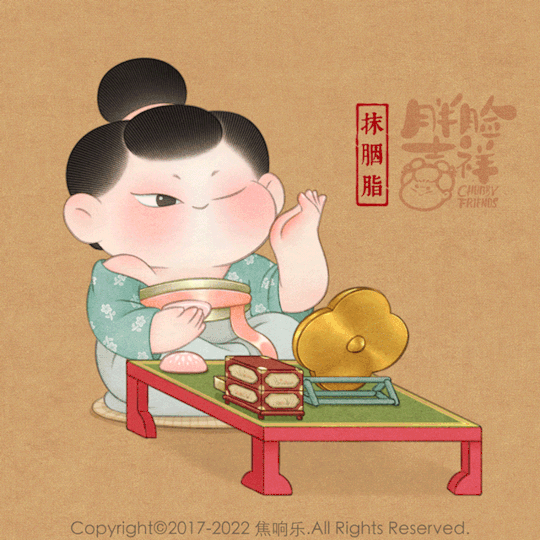
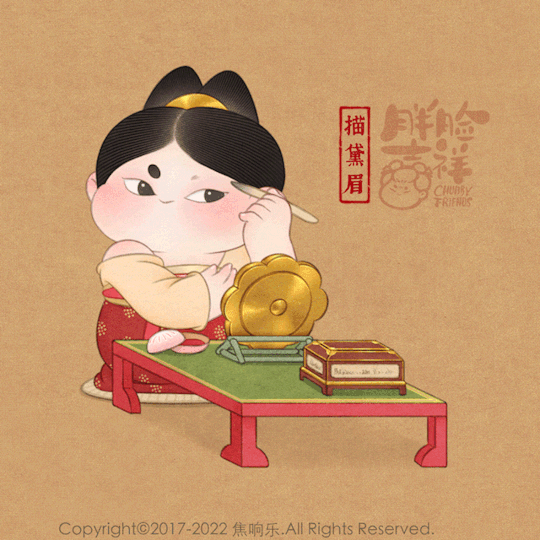
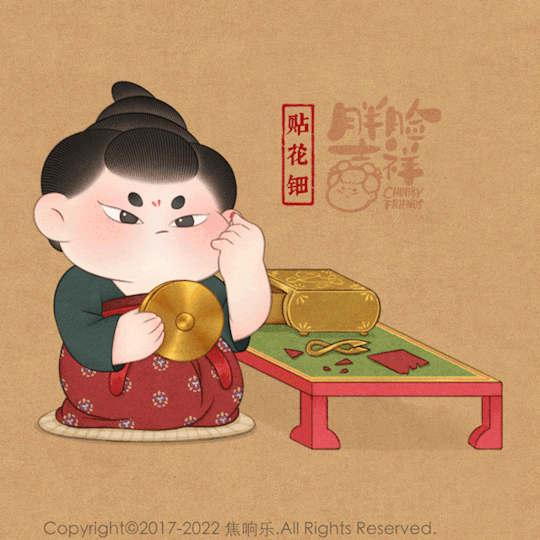
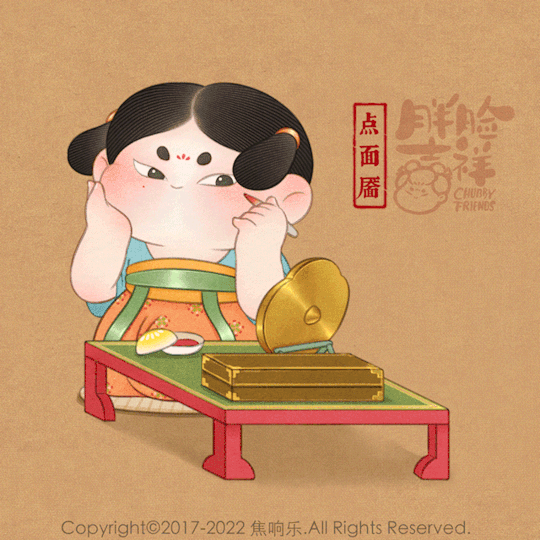



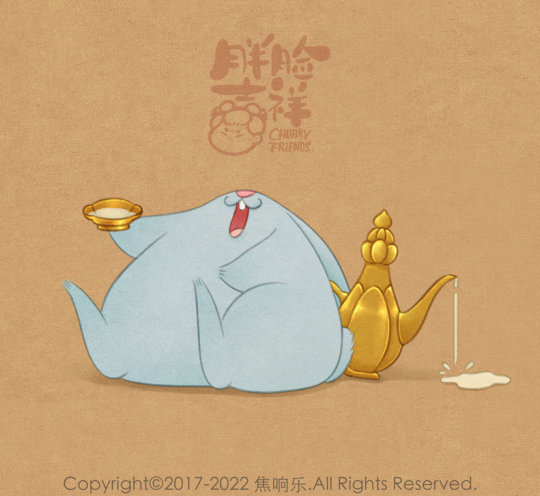
《大唐七步妆/Seven-Step Makeup Of The Tang Dynasty》BY @
焦响乐_
From Top To Bottom:
STEP 1: Coat With Lead Powder (铅粉/ Qiān fěn )
The application of lead powder for makeup in ancient China can be traced back to the Zhou Dynasty according to the Song Dynasty record 《Shi Ji Yuan/事物纪原》
STEP 2: Put On Rouge (胭脂/ Yān zhī )
In China, Rouge was used as early as the Shang Dynasty. It was made from the extracted juice of leaves from red and blue flowers. Some people added bovine pulp and pig pancreas to make the product denser. Women would wear the heavy rouge on their cheeks and lips.
STEP 3: Draw Eyebrows (黛眉/ Dài méi )
This makeup method has appeared in the pre-Qin period. The eyebrows are plucked, and the eyebrows are painted with a blue-black pigment made of scorched wicker to replace the original eyebrows.
STEP 4: Put On Huadian(花钿)
Is a form of traditional Chinese ornamental forehead makeup, which is located between the eyebrows and sometimes on the cheeks.According to the legend, the huadian originated in the Southern dynasty period its creation is attributed to Princess Shouyang.The huadian was also popular among Tang and Song dynasties' women. In present days, huadian is often combined with the wearing of hanfu.
STEP 5: Draw MianYe (面靥/Miàn yè)
Refers to the small depressions on the facial skin, which mostly appear when laughing, so it is also called the laughter pit. The existence of dimples will make facial expressions more vivid, look more lively and lovely, more charming and moving, so it is regarded as one of the signs of beauty and beauty, and many young women who love beauty are eager to have it.
STEP 6: Draw XieHong (斜红/ Xié hóng )
Xie Hong is a special kind of face decoration in ancient times. When dressing up, a red crescent is drawn on both sides of a woman's eyes.
STEP 7: Apply Mouth Grease (口脂/Kǒu Zhī )
Before the appearance of tube lipsticks, mouth grease and rouge were actually common. They were packaged in small boxes or cans, and were directly dipped and applied with fingers. Most of the lipsticks in the past were bright red, but in the Tang and Song Dynasties, sandalwood color lips were popular. Sandalwood is today's flesh color and nude tones. This color of lipstick is still popular until modern times.
Weibo🔗:https://weibo.com/1884175465/LiFPo94Lq
#chinese hanfu#chinese makeup#tang dynasty#makeup history#china#hanfu accessories#hanfu#hanfu_challenge#hanfu fashion#rouge#lead powder#eyebrows#huadian#mianye#chinahistory#history#cute#illustration#gif
450 notes
·
View notes
